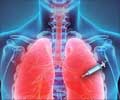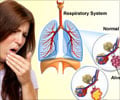
‘Increase in early stage lung cancer is due to the availability of less-invasive surgical procedures and more advanced techniques for delivering Radiation Therapy, such as stereotactic body RT (SBRT).’
Tweet it Now
Dr. Kapadia and colleagues conducted a retrospective study of eligible patients from 2000 to 2010 diagnosed with their first stage 1 non-small-cell lung cancer (NSCLC). Data were collected using the Surveillance, Epidemiology, and End Results (SEER)-18 database, which includes information from 18 American cancer registries. During the study period, 65,197 stage 1 NSCLC patients were registered in the database. Overall, 62% of patients underwent an operation, 15% received radiation therapy (RT) as their primary therapy, 3% received both operation and RT, and 18% did not receive either therapy.The researchers found that the two-year overall survival for patients who were treated with either surgery or RT increased from 61% in 2000 to 70% in 2009. This improvement corresponded to a 3.5% annual decrease in the risk of death from lung cancer.
"To the best of our knowledge, this was the first study to look at stage-specific diagnoses and break them down by if and how patients were treated. It also examined the yearly trends for patterns of treatment and patient outcomes over a recent timespan," said Dr. Kapadia.
Over that time period, the data showed an increasing trend toward treatment with surgery or RT for stage 1 NSCLC. In 2000, 58.1% of patients underwent an operation, increasing to 63.9% in 2010. Similarly, 17.2% of patients received RT in 2000, while 18.3% received the therapy in 2010.
The researchers concluded that these increases were likely due to the availability of less-invasive surgical procedures and more advanced techniques for delivering RT, such as stereotactic body RT (SBRT). SBRT permits the precise and accurate delivery of high doses of radiation over a shorter period of time (typically 1 to 2 weeks) than with conventional radiation treatments.
Advertisement
Although the study revealed that fewer patients were untreated over time, a significant proportion of patients still do not receive treatment for "an otherwise highly curable disease," explained Dr. Kapadia. In 2000, approximately 20.2% of patients in this study did not receive surgery or radiation, decreasing to 15.7% by 2010.
"We were disappointed to see only a modest reduction in the number of untreated patients, which remained unacceptably high," he said. "Our hope is that future clinical, research, and policy efforts focus on reducing that number as close to zero as possible."
Advertisement
"If you have been diagnosed with stage 1 lung cancer, it is important to know that there are safe and effective treatment options that you should discuss with your doctors," said Dr. Kapadia. "Resource-intensive treatments for cancer must always be used judiciously, and efforts to ensure their appropriate and consistent application among all patients with curable disease should be paramount."
The complete study is published in The Annals of Thoracic Surgery.
Source-Eurekalert













